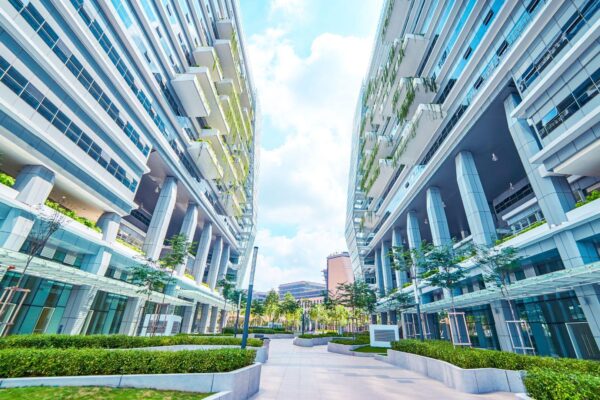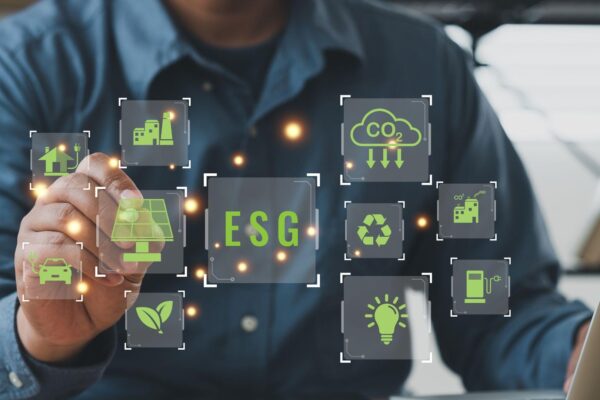In 2024, companies started to elevate sustainable business through more future-fit models. Global challenges, from resource scarcity to social and workplace welfare, now drive a shift from merely reducing harm to actively enhancing positive impact.This era also necessitates active improvement.
Moving beyond zero emission to achieving net-positive impact for the planet, communities, and economy is evident. Regenerative practice changed the focus of the circular economy for a more sustainable future, serving as a new fitting business model.
Read Another Article: How Indonesian Businesses Are Aligning with SDGs for A Sustainable Future
Table of Contents
ToggleWhat is Regenerative Business for Sustainable Business?

A regenerative business goes beyond traditional sustainability, aiming to actively create a net-positive effect. It’s stepping from restoration to regeneration of entire ecosystems (natural resources, communities, and human well-being). This revolutionary approach is guided by core principles.
1. Systemic Thinking
Recognizing profound interconnectedness across environmental, social, and economic elements to achieve net-positive impact.
2. Circularity & Resource Regeneration
Actively supporting the continuous renewal and replenishment of natural and social resources, moving towards closed-loop systems where waste becomes a valuable resource.
3. Collaboration & Stakeholder Empowerment
Promoting community involvement and equitable practices by collaborating with employees, suppliers, customers, and local communities in co-creating solutions and fostering shared value.
4. Continuous Learning & Adaptive Resilience
Embracing innovation, staying agile, and constantly evolving practices to improve environmental, social, and economic impacts, building inherent resilience for long-term viability.
The Business Case for Embracing Regeneration
Adopting a regenerative approach offers multifaceted advantages, impacting environmental, social, and governance (ESG) aspects beyond traditional CSR of sustainable business.
1. Social Well-being and Employee Performance
Regenerative models prioritize community well-being, fostering positive relationships and engagement with local communities. They promote fair, inclusive, and responsible labor practices, leading to improved social capital, reduced inequalities, and better social welfare. This also translates into increased productivity and naturally attracting top talent seeking purposeful and meaningful work.
2. Economic Viability and Resilience
Investing in ecosystems and communities fosters innovation, strengthens long-term viability, and builds resilience against market and climate disruptions. Regenerative practices alone could generate trillions in economic value.
3. Brand Reputation and Customer Loyalty
Since consumers increasingly prefer brands embodying net-positive missions, implementing regenerative practices demonstrates commitment to advanced sustainable principles, driving brand differentiation and fostering strong customer loyalty.
4. Environmental Impact
This innovative practice directly improves soil health, sequesters carbon, protects vital ecosystems, and rebuilds biodiversity, integral to creating a more positive environmental state.
How to Transform Sustainable Business with Regenerative Practices
Transition towards regeneration business practices builds on existing sustainable practices, with the circular economy often serving as a foundational catalyst.
1. Define Your Purpose and Assess Your Impact
Begin by understanding your current ESG footprint and clearly articulating your positive impact vision beyond profit. Then, set specific regeneration goals for stakeholder buy-in.
2. Adopt Regenerative Models and Strategies
- Embrace circularity: design products for longevity, reusability, and recycling, minimizing virgin material use and integrating reverse logistics.
- Foster collaboration: engage all stakeholders (employees, suppliers, customers, and community partners) to co-create solutions, recognizing regeneration as a shared effort.
- Strategic investment in regenerative solutions and sourcing: actively invest in technology and innovative practices, prioritizing sourcing that restores ecosystems, like regenerative farms. Develop nature-based innovations, transition to renewables, and directly engage in broader ecosystem restoration efforts.
3. Measure, Learn, and Communicate Transparently
Continuously assess progress using tools like carbon footprint audits or B Impact Assessments. Communicate initiatives transparently to inspire others, leveraging digital tools for clarity and avoiding greenwashing.
Regenerative Practices to Cultivate Profound Sustainable Impact
The transition to regenerative models marks the essential next step for any sustainable business committed to long-term viability and profound positive impact.
Discover how Satuplatform can help simplify your business transformation towards a regenerative future. Learn more about our services through FREE DEMO today!
Similar Article
Bagaimana Peran Perang dan Militer sebagai Kontributor Jejak Karbon Global
Konflik dan perang menciptakan kontributor jejak karbon baru dengan dampak signifikan dan sayangnya, sebagian besar tidak dihitung. Emisi ini jarang…
Why Product Lifespan Is the Next Frontier for Sustainable Business
Embracing product longevity and extending product lifespan emerges as a current and indispensable strategic priority for cultivating sustainable business growth…
Green Building sebagai Cara Mengurangi Jejak Karbon, Ini yang Perlu Dilakukan!
Di tengah isu perubahan iklim yang semakin mendesak, bisnis dan masyarakat global mulai sadar pentingnya pembangunan yang lebih ramah lingkungan.…
Unveiling the Environmental Impact of Children’s Toys Industry
The global toy industry plays a significant role in early childhood development, creativity, and education. Toys bring joy, imagination, and…
ESG as Sustainability Initiatives for Modern Industry
In today’s world, sustainability is no longer just a “nice-to-have”, but it’s a must. With rising concerns about climate change,…
ESG Strategies for Business Growth in Developing Countries
In today’s fast-changing world, businesses are no longer only measured by profits. Companies are now expected to be responsible for…







